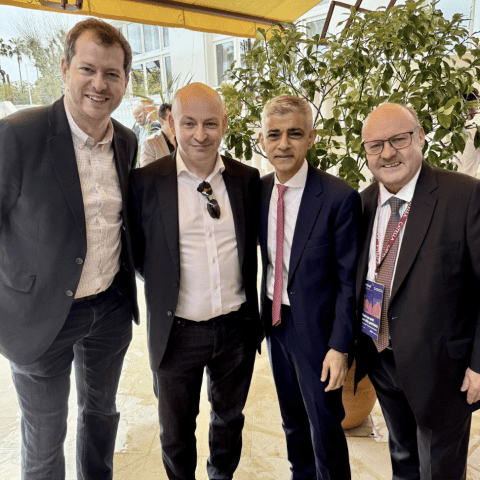“Welcome to England, home of the economic crisis.”

In the immortal words of Dolly Parton, “here you come again…just when I’ve begun to get myself together.” No doubt this line was never intended to refer to the beginning of Britain’s biggest rail strike in three decades (for Londoners the second rail strike in three months), timed perfectly to sit on the precipice of the first ‘post’-pandemic summer since 2019… but I think the sentiment stands up to the comparison.
Following a failure of negotiations, some 40,000 rail workers from 13 train operation companies and Network Rail walked out today, with action planned over the coming week and warned to continue into the summer months. RMT boss Mick Lynch says that the root of the problem comes from £4 billion worth of cuts by the government, £2 billion each from the TfL and national railways budgets, creating ‘transport austerity’ - with pay that can’t keep up to inflation, job cuts and a lack of guarantees against compulsory redundancy.
In the opposite corner, the government stands firm that the strike is a ‘political choice’ by the RMT, with Transport Secretary Grant Shapps arguing that the budget ‘reduction’ simply reflects the pandemic-related falls in revenue. Besides, its members already benefit from generous pension arrangements and median pay rates above the national average, argued DCMS minister Chris Philp on Newsnight yesterday evening.
However, there is evidence to suggest that this rhetoric could fall on deaf ears, with other public-sector unions representing everyone from teachers to criminal barristers suggesting they may follow suit and declare action if pay issues are not resolved. According to the ONS, between February and April this year, average pay within the private sector saw growth of 8%, whilst the publicsector languished at 1.5%.
In the longer term, the IFS suggests that whilst real pay has grown by 4.3% since 2010 in the private sector, it has reduced by 4.3% in the public sector. And with inflation now at 9% (up 7% from this time last year) and rising fast, it’s easy to see why many have been left feeling short-changed.
The government contend that any concessions that would see public-sector wages increased to meet the rising cost of living could create a “wage/price spiral”, where high prices are locked in and become (pardon the expression) the new normal. Instead, in a move likely to inflame tensions further, Business Secretary Kwasi Kwarteng has promised that legislation is ‘on the way’ to end the ban of the use of temporary workers to stand-in for those on strike.
Whilst many have been quick to label this ‘the summer of discontent’, it’s worth remembering that so far, the consequences of this discontent have been narrower in focus that its 1976-winter counterpart. Many of us in the private sector, including myself, can now enjoy the choice between making the journey into work or working from home, regardless of industrial action. Others, predominantly in the public sector, do not have the same choice. A friend who works as an ambulance call handler told me that some colleagues have had 3-hour commutes added on (each way) to their 12-hour shifts to get in today, with others having to fork out for taxis and parking for the rest of the week.
Should further strikes come into play, considerations such as childcare may force the disruption more evenly on us. For now, Shapps may be right to warn that the strikes will most hurt the people they are trying to protect.
The title? Not my own words, but allegedly those of a 9-year-old Boris Johnson so despaired with the state of industrial action in 1970’s Britain he produced a painting to express his feelings about his country. No, really.









